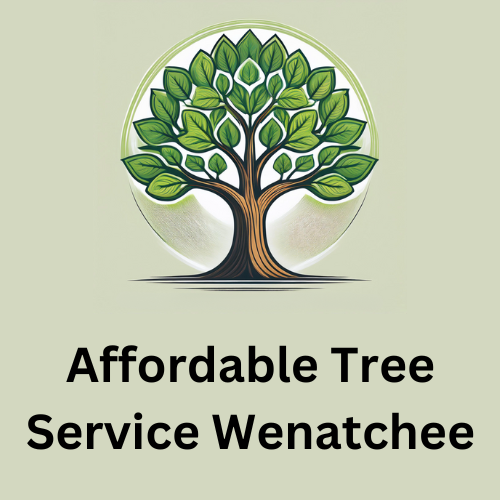Case Study: A Low Impact Tree Removal Project in Wenatchee
Case Study: A Low-Impact Tree Removal Project in Wenatchee
Tree removal doesn’t have to come at the expense of the environment. For eco-conscious homeowners and property developers, low-impact tree removal offers a way to make necessary changes to property landscapes while protecting surrounding ecosystems.
Our recent project in Wenatchee is a shining example of how tree removal can be both effective and environmentally sustainable. This case study highlights the steps taken, techniques used, and lessons learned from a successful low-impact tree removal project, offering inspiration and practical insights for property owners with similar goals.
Understanding Low-Impact Tree Removal
What is Low-Impact Tree Removal?
Low-impact tree removal focuses on reducing disruption—both to the property and the surrounding ecosystem—during the process. This approach prioritizes sustainability by preserving existing greenery, protecting soil health, and minimizing waste generated during the removal process.
Why Is It Important?
Conventional methods of tree removal can harm landscapes, disturb wildlife habitats, and contribute to erosion or runoff problems. Low-impact techniques mitigate these risks by respecting the balance of the local environment. For homeowners, this approach not only helps conserve nature but also protects their property's value and aesthetic appeal.
Techniques Used in Low-Impact Tree Removal
Manual Removal: Employing skilled chainsaw operators and rope systems instead of heavy machinery to minimize damage to surrounding trees and soil.
Sectional Felling: Cutting trees in smaller sections to prevent large impacts during the removal process.
Recycling and Reuse: Turning removed trees into mulch, firewood, or furniture instead of taking them to landfills.
Preservation of Root Systems: Protecting nearby vegetation from unnecessary disturbance during removal operations.
The Case Study: Background and Goals
A Look at the Property in Wenatchee
The property in Wenatchee featured a mix of native pine and fir trees. The homeowner needed to remove two large, diseased trees positioned dangerously close to their home. Leaving the trees posed a hazard, but the homeowner was deeply committed to preserving the beauty of the natural landscape and minimizing environmental impact.
Eco-Conscious Goals
The homeowner, an advocate for green living, had specific goals for the project:
To ensure safe removal of the trees without damaging surrounding vegetation or soil.
To recycle or repurpose the removed trees.
To maintain compliance with local environmental regulations and preserve the health of the surrounding ecosystem.
Planning and Execution
Detailed Planning for Zero Impact
Before the first cut was made, a rigorous planning process was put in place. Arborists conducted a thorough inspection of the trees, evaluating their health, size, and proximity to nearby structures. A risk analysis was completed to ensure worker safety and environmental compliance.
Collaboration and Compliance
The project required close collaboration between the homeowner, professional arborists, and the Wenatchee local environmental authority. The team ensured that the removal adhered to strict guidelines for minimal landscape disturbance. Together, they identified the best methods for removal and plans for tree recycling and replanting.
Execution with Care
To execute the project with low impact:
Experts used sectional felling to safely remove branches and trunk sections, eliminating the risk of property or soil damage.
Protective mats were placed around the work site to safeguard vegetation and prevent soil compaction.
The removed trees were repurposed into mulch and firewood, with a portion of the wood donated to a local community garden.
Results and Impact
A Safe and Sustainable Outcome
The low-impact removal technique effectively removed the hazardous trees and achieved all the homeowner’s goals. Surrounding vegetation remained intact, and the property's aesthetic charm was preserved.
Positive Community Feedback
The homeowner expressed gratitude for the project's thoughtful execution, saying, "This project proves you can remove trees safely while honoring the environment. It's been a fantastic outcome." Neighbors also appreciated the project's approach, helping raise awareness about eco-friendly tree management in the Wenatchee community.
Lessons Learned and Tips for Homeowners
Key Takeaways from the Wenatchee Project
Start with Proper Planning: A comprehensive assessment and risk analysis lay the groundwork for success.
Call the Experts: Skilled arborists equipped with specialized tools and knowledge are indispensable for sensitive tree removal.
Recycle Creatively: Turn removed trees into mulch, firewood, or furniture to give back to the local community or your property.
Collaborate Locally: Work with local authorities or environmental groups to ensure compliance and minimize the project’s ecological footprint.
Tips for Homeowners
Hire Certified Arborists: Ensure your tree removal service provider is certified and experienced in low-impact techniques.
Prioritize Nearby Vegetation: Plan to protect root systems and neighboring trees during the removal process.
Understand Local Regulations: Familiarize yourself with local tree protection laws and guidelines before starting.
Repurpose Your Trees: Find creative ways to use removed trees, whether through community donations or property enhancement projects.
Helping You Protect Both Property and Planet
Sustainable tree management isn’t just a trend—it’s a responsibility we can all share in preserving natural ecosystems, one project at a time. The Wenatchee case study is proof that eco-conscious homeowners can lead the way in balancing property needs with environmental stewardship.
Whether you’re considering a similar project or simply exploring options, think about going low-impact—your property, your community, and the planet will thank you.
Need Expert Help?
If you're ready to get started on a sustainable tree removal project, connect with our certified arborists today. Together, we can create a plan tailored to your needs while staying true to your eco-friendly values.
